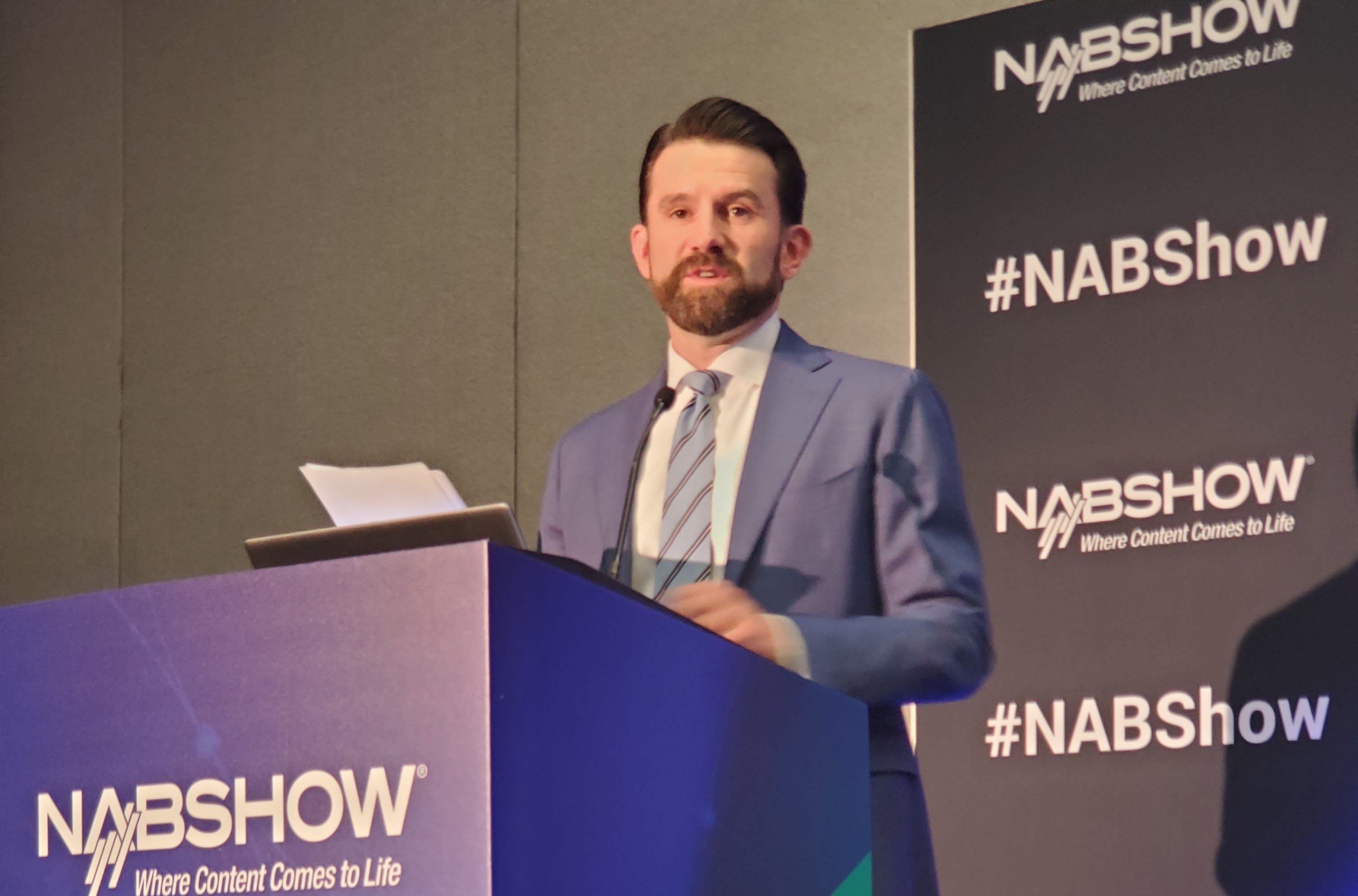
LAS VEGAS—With analysts like BIA Advisory Services forecasting that the datacasting capabilities of NextGen TV will produce over $10 billion in revenue for broadcasters by 2030, Sinclair has announced ambitious plans to build and operate an interconnected broadcast platform to provide commercial services and solutions for national data distribution.
During a press conference at the 2023 NAB Show, Sinclair’s president and CEO Chris Ripley outlined both the opportunities NextGen TV is creating for datacasting and described Sinclair's plans to create a platform that would allow broadcasters take advantage of those opportunities using their platform to automate and simplify the process of using their spectrum for datacasting.
Ripley likened their Data Distribution as a Service (DDaaS) platform, which it expects to go live in the first quarter of 2024, as “the glue between all their stations and so we'll be ready to go to market to go live with this system. Any broadcaster who wants to participate can use this system to automate…the provisioning of the data. They can do it manually but no one will possibly ever want to do it that way. It just wouldn't ever scale.”
More specifically, the platform will use NextGen Broadcast (ATSC 3.0) network technology to provide a wireless broadcast backbone for IP (Internet Protocol) data delivery across the country, increasing the value of spectrum for all broadcasters and providing an IP connection to serve their communities better.
This effort is not to be confused with the rollout of NextGen TV broadcasts, which are now in more than 60% of the country and expected to hit 80% by year’s end. Rather, it is more like a system used to manage a station’s advertising, Ripley said.
As NextGen Broadcasting is deployed throughout the country, and other broadcasters see the value in participating in this business, Sinclair expects use of the platform to increase from local and regional services available in some markets now to nationwide services by 2024.
To this end, Sinclair has created a new DDaaS business-related unit under Del Parks, president of technology, to capitalize on these emerging opportunities.
To create the platform, Sinclair established several joint ventures and strategic relationships with some key technology partners in the U.S., Korea and India. Working with Sinclair, these partners are designing, building and deploying this sophisticated DDaaS platform infrastructure.
Those relationships include CAST.ERA, a joint venture with SK Telecom, the South Korean, Information Communications Technology company, which brings its sophisticated experience to infrastructure development. SK Telecom will be providing its advanced mobile edge computing technology, “Petasus Media,” to the project. Sinclair will also rely on Saankhya Labs in India, which will contribute to the broadcast Core Network and provide wireless technology to the new DDaaS platform.
Ripley also laid out a number of use cases that NextGen TV can exploit given the “one-to-many” architecture of broadcasting. Those will include large-scale software updates for “edge-heavy” industries as well as services to automobiles.
Data distribution companies or Content Distribution Networks (CDNs) seeking a cost-efficient supplement to perform data off-loading from traditional unicast cellular service will find this data distribution platform to be a needed complement to their IP data distribution tools, Sinclair reported.
Spectrum providers, such as BitPath, will be able to utilize the DDaaS platform to monetize their spectrum in a way that is not currently possible in today’s decentralized and unconnected TV broadcast architecture.
As an example, providers of data services to vehicles will be able to deliver software updates simultaneously to an infinite number of IoT devices in their smart vehicles to update software for new functionality, infotainment, bug fixes, and navigation, Sinclair said.
Safety updates can be delivered within hours, not days. Services can be provided to hundreds of thousands of devices instantly and simultaneously with no slowdowns since broadcast architecture is not subject to cell phone network bottlenecks.
The platform is also designed to enhance Advanced Emergency Information significantly by enabling region-wide connectivity for this critical public interest service that can provide robust connectivity where other communications systems may fail, especially during peak traffic times or in an emergency.
Last year’s Florida hurricanes are critical examples of the robust broadcast infrastructure. While over 2/3 of the cell phone network failed in and around Fort Myers during the category 4 Hurricane Ian (over 1,550 towers down), area-wide broadcast coverage remained in service. Of the 32 TV stations serving the Tampa market and another 14 in Fort Myers, only 5 suffered temporary outage.
All the remaining television broadcasters blanketed the area. Interconnecting these TV broadcasters using a data network will ensure that users with charged cellphones and vehicles equipped with NextGen reception capabilities will have access to evacuation routes, shelter locations, and emergency resource locations, all of which can be conveyed in multiple languages.
The sophisticated NextGen wireless backbone will incorporate new cloud technologies including SD-WAN (Software Defined Wide Area Network) and AI (Artificial Intelligence) orchestration, Sinclair reported.
This will permit cooperating broadcasters to match available spectrum capacity dynamically with users’ data needs.
This platform is also designed to allow customers’ data to be tracked, confirmed, and billed in an effective ‘least cost routing’ manner, Sinclair reported.
The backbone network will also provide a wide range of security, modulation, and coding options catering to specific applications and quality of service needs. This data platform can scale across various spectrum-enabled businesses including automotive services, aircraft/drone connectivity, first responder missions, distance learning solutions, and more, the company said.







